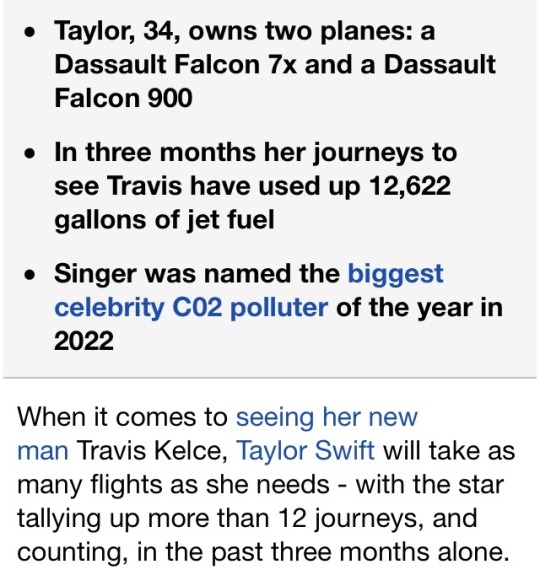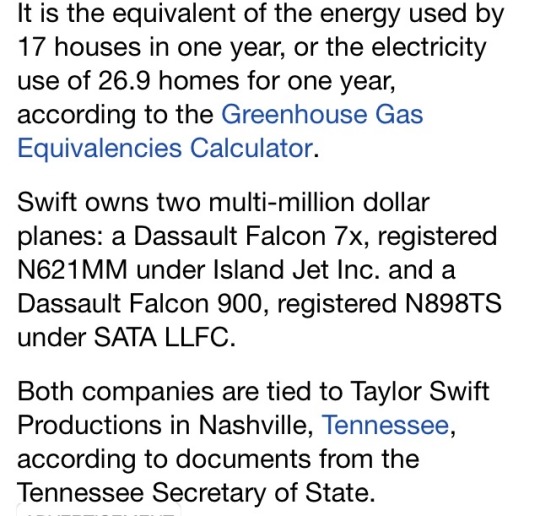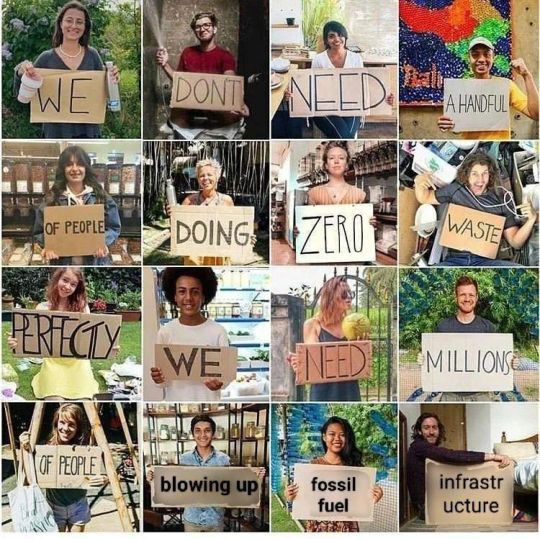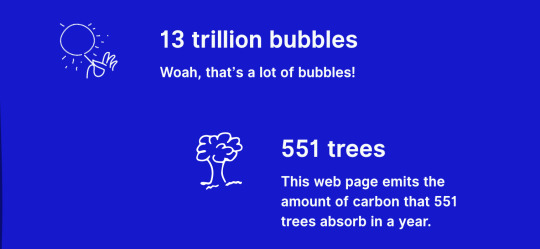#Co2
Explore tagged Tumblr posts
Text









imagine being that fucking rich and that fucking careless.
#anti taylor swift#taylor swift is a climate criminal#taypollution#carbon emissions#co2#the goth punk billionaire#climate change#climate crisis
39K notes
·
View notes
Text

#fossil fuels#infrastructure#global warming#environmentalism#memes#meme#antifascist#co2 emissions#co2#methane#carbon dioxide#jerkmillionaires#jerkbillionaires#jerktrillionaires#eat the rich#eat the fucking rich#ausgov#politas#auspol#tasgov#taspol#australia#neoliberal capitalism#fuck neoliberals#anthony albanese#albanese government#fuck the gop#fuck the police#fuck the supreme court#fuck the patriarchy
7K notes
·
View notes
Text
A proposal to stop labelling carbon dioxide as a pollutant and instead celebrate it as a "foundational nutrient for all life on Earth" will be up for debate at the United Conservative Party's (UCP) annual general meeting(opens in a new tab) in November. The resolution, which includes abandoning Alberta’s net-zero targets, flies in the face of the scientific consensus(opens in a new tab) that carbon dioxide emissions created by humans burning fossil fuels is one of the primary drivers of global warming. The increased temperatures, in turn, cause more frequent and extreme weather(opens in a new tab) like wildfires, floods, heat waves, storms and droughts. A study published in Nature (opens in a new tab)found the deadly 2021 heat dome in BC that killed more than 619 people was amplified by climate change, and that other events like the fires that tore through Jasper this summer are made more likely and exacerbated by climate change. The policy resolution put forward by the Athabasca-Barrhead-Westlock and Red Deer South constituency associations says the carbon cycle is a biological necessity and "The earth needs more CO2 to support life and to increase plant yields, both of which will contribute to the health and prosperity of all Albertans."
Continue Reading.
Tagging: @newsfromstolenland @abpoli
753 notes
·
View notes
Text
the scale of AI's ecological footprint
standalone version of my response to the following:
"you need soulless art? [...] why should you get to use all that computing power and electricity to produce some shitty AI art? i don’t actually think you’re entitled to consume those resources." "i think we all deserve nice things. [...] AI art is not a nice thing. it doesn’t meaningfully contribute to us thriving and the cost in terms of energy use [...] is too fucking much. none of us can afford to foot the bill." "go watch some tv show or consume some art that already exists. […] you know what’s more environmentally and economically sustainable […]? museums. galleries. being in nature."
you can run free and open source AI art programs on your personal computer, with no internet connection. this doesn't require much more electricity than running a resource-intensive video game on that same computer. i think it's important to consume less. but if you make these arguments about AI, do you apply them to video games too? do you tell Fortnite players to play board games and go to museums instead?
speaking of museums: if you drive 3 miles total to a museum and back home, you have consumed more energy and created more pollution than generating AI images for 24 hours straight (this comes out to roughly 1400 AI images). "being in nature" also involves at least this much driving, usually. i don't think these are more environmentally-conscious alternatives.
obviously, an AI image model costs energy to train in the first place, but take Stable Diffusion v2 as an example: it took 40,000 to 60,000 kWh to train. let's go with the upper bound. if you assume ~125g of CO2 per kWh, that's ~7.5 tons of CO2. to put this into perspective, a single person driving a single car for 12 months emits 4.6 tons of CO2. meanwhile, for example, the creation of a high-budget movie emits 2840 tons of CO2.
is the carbon cost of a single car being driven for 20 months, or 1/378th of a Marvel movie, worth letting anyone with a mid-end computer, anywhere, run free offline software that consumes a gaming session's worth of electricity to produce hundreds of images? i would say yes. in a heartbeat.
even if you see creating AI images as "less soulful" than consuming Marvel/Fortnite content, it's undeniably "more useful" to humanity as a tool. not to mention this usefulness includes reducing the footprint of creating media. AI is more environment-friendly than human labor on digital creative tasks, since it can get a task done with much less computer usage, doesn't commute to work, and doesn't eat.
and speaking of eating, another comparison: if you made an AI image program generate images non-stop for every second of every day for an entire year, you could offset your carbon footprint by… eating 30% less beef and lamb. not pork. not even meat in general. just beef and lamb.
the tech industry is guilty of plenty of horrendous stuff. but when it comes to the individual impact of AI, saying "i don’t actually think you’re entitled to consume those resources. do you need this? is this making you thrive?" to an individual running an AI program for 45 minutes a day per month is equivalent to questioning whether that person is entitled to a single 3 mile car drive once per month or a single meatball's worth of beef once per month. because all of these have the same CO2 footprint.
so yeah. i agree, i think we should drive less, eat less beef, stream less video, consume less. but i don't think we should tell people "stop using AI programs, just watch a TV show, go to a museum, go hiking, etc", for the same reason i wouldn't tell someone "stop playing video games and play board games instead". i don't think this is a productive angle.
(sources and number-crunching under the cut.)
good general resource: GiovanH's article "Is AI eating all the energy?", which highlights the negligible costs of running an AI program, the moderate costs of creating an AI model, and the actual indefensible energy waste coming from specific companies deploying AI irresponsibly.
CO2 emissions from running AI art programs: a) one AI image takes 3 Wh of electricity. b) one AI image takes 1mn in, for example, Midjourney. c) so if you create 1 AI image per minute for 24 hours straight, or for 45 minutes per day for a month, you've consumed 4.3 kWh. d) using the UK electric grid through 2024 as an example, the production of 1 kWh releases 124g of CO2. therefore the production of 4.3 kWh releases 533g (~0.5 kg) of CO2.
CO2 emissions from driving your car: cars in the EU emit 106.4g of CO2 per km. that's 171.19g for 1 mile, or 513g (~0.5 kg) for 3 miles.
costs of training the Stable Diffusion v2 model: quoting GiovanH's article linked in 1. "Generative models go through the same process of training. The Stable Diffusion v2 model was trained on A100 PCIe 40 GB cards running for a combined 200,000 hours, which is a specialized AI GPU that can pull a maximum of 300 W. 300 W for 200,000 hours gives a total energy consumption of 60,000 kWh. This is a high bound that assumes full usage of every chip for the entire period; SD2’s own carbon emission report indicates it likely used significantly less power than this, and other research has shown it can be done for less." at 124g of CO2 per kWh, this comes out to 7440 kg.
CO2 emissions from red meat: a) carbon footprint of eating plenty of red meat, some red meat, only white meat, no meat, and no animal products the difference between a beef/lamb diet and a no-beef-or-lamb diet comes down to 600 kg of CO2 per year. b) Americans consume 42g of beef per day. this doesn't really account for lamb (egads! my math is ruined!) but that's about 1.2 kg per month or 15 kg per year. that single piece of 42g has a 1.65kg CO2 footprint. so our 3 mile drive/4.3 kWh of AI usage have the same carbon footprint as a 12g piece of beef. roughly the size of a meatball [citation needed].
553 notes
·
View notes
Text
Climate Change Hoax, let’s do the math 🤔
#pay attention#educate yourselves#educate yourself#reeducate yourselves#knowledge is power#reeducate yourself#think about it#think for yourselves#think for yourself#do your homework#do your research#do your own research#do some research#ask yourself questions#question everything#government corruption#government lies#government secrets#truth be told#lies exposed#evil lives here#climate change#climate crisis#climate change hoax#news#co2#do you understand
327 notes
·
View notes
Text
"The world is betting heavily on carbon capture — a term that refers to various techniques to stop carbon pollution from being released during industrial processes, or removing existing carbon from the atmosphere, to then lock it up permanently.
The practice is not free of controversy, with some arguing that carbon capture is expensive, unproven and can serve as a distraction from actually reducing carbon emissions. But it is a fast-growing reality: there are at least 628 carbon capture and storage projects in the pipeline around the world, with a 60% year-on-year increase, according to the latest report from the Global CCS (Carbon Capture and Storage) Institute. The market size was just over $3.5 billion in 2024, but is projected to grow to $14.5 billion by 2032, according to Fortune Business Insights.
Perhaps the most ambitious — and the most expensive — type of carbon capture involves removing carbon dioxide (CO2) directly from the air, although there are just a few such facilities currently in operation worldwide. Some scientists believe that a better option would be to capture carbon from seawater rather than air, because the ocean is the planet’s largest carbon sink, absorbing 25% of all carbon dioxide emissions.
In the UK, where the government in 2023 announced up to £20 billion ($26.7 billion) in funding to support carbon capture, one such project has taken shape near the English Channel. Called SeaCURE, it aims to find out if sea carbon capture actually works, and if it can be competitive with its air counterpart.
“The reason why sea water holds so much carbon is that when you put CO2 into the water, 99% of it becomes other forms of dissolved carbon that don’t exchange with the atmosphere,” says Paul Halloran, a professor of Ocean and Climate Science at the University of Exeter, who leads the SeaCURE team.
“But it also means it’s very straightforward to take that carbon out of the water.”
Pilot plant
SeaCURE started building a pilot plant about a year ago, at the Weymouth Sea Life Centre on the southern coast of England. Operational for the past few months, it is designed to process 3,000 liters of seawater per minute and remove an estimated 100 tons of CO2 per year.
“We wanted to test the technology in the real environment with real sea water, to identify what problems you hit,” says Halloran, adding that working at a large public aquarium helps because it already has infrastructure to extract seawater and then discharge it back into the ocean.
The carbon that is naturally dissolved in the seawater can be easily converted to CO2 by slightly increasing the acidity of the water. To make it come out, the water is trickled over a large surface area with air blowing over it. “In that process, we can constrict over 90% of the carbon out of that water,” Halloran says.
The CO2 that is extracted from the water is run through a purification process that uses activated carbon in the form of charred coconut husks, and is then ready to be stored. In a scaled up system, it would be fed into geological CO2 storage. Before the water is released, its acidity is restored to normal levels, making it ready to absorb more carbon dioxide from the air.
“This discharged water that now has very low carbon concentrations needs to refill it, so it’s just trying to suck CO2 from anywhere, and it sucks it from the atmosphere,” says Halloran. “A simple analogy is that we’re squeezing out a sponge and putting it back.”
While more tests are needed to understand the full potential of the technology, Halloran admits that it doesn’t “blow direct air capture out the water in terms of the energy costs,” and there are other challenges such as having to remove impurities from the water before releasing it, as well as the potential impact on ecosystems. But, he adds, all carbon capture technologies incur high costs in building plants and infrastructure, and using seawater has one clear advantage: It has a much higher concentration of carbon than air does, “so you should be able to really reduce the capital costs involved in building the plants.”
Mitigating impacts
One major concern with any system that captures carbon from seawater is the impact of the discharged water on marine ecosystems. Guy Hooper, a PhD researcher at the University of Exeter, who’s working on this issue at the SeaCURE site, says that low-carbon seawater is released in such small quantities that it is unlikely to have any effect on the marine environment, because it dilutes extremely quickly.
However, that doesn’t mean that SeaCURE is automatically safe. “To understand how a scaled-up version of SeaCURE might affect the marine environment, we have been conducting experiments to measure how marine organisms respond to low-carbon seawater,” he adds. “Initial results suggest that some marine organisms, such as plankton and mussels, may be affected when exposed to low-carbon seawater.”
To mitigate potential impacts, the seawater can be “pre-diluted” before releasing it into the marine environment, but Hooper warns that a SeaCURE system should not be deployed near any sensitive marine habitats.
There is rising interest in carbon capture from seawater — also known as Direct Ocean Capture or DOC — and several startups are operating in the field. Among them is Captura, a spin off from the California Institute of Technology that is working on a pilot project in Hawaii, and Amsterdam-based Brineworks, which says that its method is more cost-effective than air carbon capture.
According to Stuart Haszeldine, a professor of Carbon Capture and Storage at the University of Edinburgh, who’s not involved with SeaCURE, although the initiative appears to be more energy efficient than current air capture pilot tests, a full-scale system will require a supply of renewable energy and permanent storage of CO2 by compressing it to become a liquid and then injecting it into porous rocks deep underground.
He says the next challenge is for SeaCURE to scale up and “to operate for longer to prove it can capture millions of tons of CO2 each year.”
But he believes there is huge potential in recapturing carbon from ocean water. “Total carbon in seawater is about 50 times that in the atmosphere, and carbon can be resident in seawater for tens of thousands of years, causing acidification which damages the plankton and coral reef ecosystems. Removing carbon from the ocean is a giant task, but essential if the consequences of climate change are to be controlled,” he says."
-via CNN, April 29, 2025
#carbon capture#environment#co2#emissions#carbon emissions#ocean#seawater#uk#united kingdom#europe#climate news#climate action#good news#hope
227 notes
·
View notes
Text
How much does tumblr cost the planet?
according to website CO2 calculator here






216 notes
·
View notes
Text
SARS-CoV-2, CO2, and You
youtube
A good video about how CO2 monitors work and how you can analyze the information they give you to protect against airborne diseases.
And the companion video about masking:
youtube
#video#aerosols#airborne#covid is airborne#airborne transmission#transmission#Aranet#Aranet4#CO2#co2 monitor#youtube#covid#masking#n95s#masks work#Youtube
67 notes
·
View notes
Text
A new study has revealed for the first time the vital role carbon dioxide (CO2) plays in determining the lifespan of airborne viruses—namely SARS-CoV-2, the virus that causes COVID-19. It clearly showed keeping CO2 levels in check helps to reduce virus survival, and therefore the risk of infection. The research, led by the University of Bristol and published today in Nature Communications, shows how CO2 is a major factor in prolonging the life of SARS-CoV-2 variants present in tiny droplets circulating in the atmosphere. Lead author Dr. Allen Haddrell, Senior Research Associate in Aerosol Science at the University's School of Chemistry, said, "We knew SARS-CoV-2, like other viruses, spreads through the air we breathe. But this study represents a huge breakthrough in our understanding of exactly how and why that happens, and crucially, what can be done to stop it.
Continue Reading.
222 notes
·
View notes
Text

68 notes
·
View notes
Text

#fossil fuels#pollution#oil companies#oil#gas#csg#coal#hurricane milton#milton#global warming#climate change#science#co2 emissions#co2#methane#earth#environmental#environment#ausgov#politas#auspol#tasgov#taspol#australia#fuck neoliberals#neoliberal capitalism#anthony albanese#albanese government
298 notes
·
View notes
Text

This is why I have an Aranet CO2 monitor. I use it everywhere. The higher the CO2 the more likely you can become infected with a virus.
https://aranet.com/en/home/products/aranet4-home?srsltid=AfmBOoqCZYt7R7BUSVxXQrDkhtA4zGOvTT__gFvFdbDkSOdtsqcJGuxo
64 notes
·
View notes
Text
Maybe it's the silence in your eyes Maybe it's the lilac when you're shy
35 notes
·
View notes
Text
A coal-fired power plant in China's Sichuan province.
China now emits more CO2 than the entire developed world combined—completely cancelling out all the sacrifices you are being forced to make in the ludicrous pursuit of Net Zero. 🤔
#pay attention#educate yourselves#educate yourself#knowledge is power#reeducate yourself#reeducate yourselves#think about it#think for yourselves#think for yourself#do your homework#do some research#do your own research#ask yourself questions#question everything#carbon footprint#co2#lies exposed#china#news#you decide
531 notes
·
View notes
Text


today i felt like giving smolderheart and worst smolderheart mom of the year fresh new references
62 notes
·
View notes
Text
Ice core data from Antarctica
#tiktok#ice core#science#Antarctica#south pole#snow#how town#data#Co2#climate change#climate crisis#howtown
10 notes
·
View notes